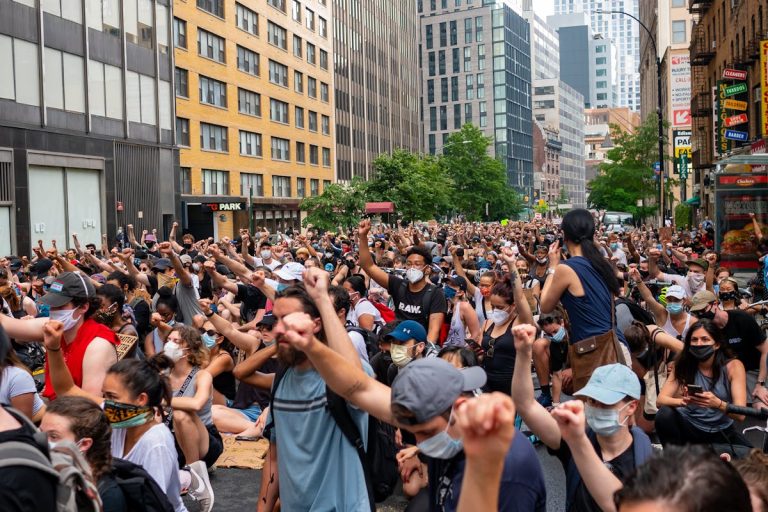The process that ensues when one is arrested is a complex and intricate sequence of events, involving multiple stages from the initial apprehension to potential court proceedings. The first stage, the arrest itself, sets into motion a chain of events that includes booking, the reading of Miranda rights, and an initial court appearance. But what precisely occurs during each of these steps, and how can one navigate this often overwhelming process? The aim of this discussion is to shed light on these questions, providing a thorough overview of what one can expect when they are arrested.
The Immediate Arrest Process
Typically, the immediate arrest process unfolds in a standardized, procedural manner. The arrest procedure begins with the initial apprehension by law enforcement officials. This often involves the physical restraint of the suspect, typically through the use of handcuffs, to guarantee both the safety of the officers and the individual being arrested.
Following physical restraint, the next step in the arrest procedure typically involves the transportation of the suspect to a local police station or detention facility. It is here that the individual will be officially booked, a detailed process involving the recording of personal information, photographing, fingerprinting, and the confiscation of personal belongings.
Once booking is complete, the individual is typically subjected to police interrogation. This process serves to gather information pertinent to the alleged crime and involves a series of questions posed by law enforcement officials. However, it is important to note that despite the various pressures that may be applied during interrogation, the individual maintains their legal rights, which include the right to remain silent and the right to request legal counsel.
Reading of Your Miranda Rights
Upon being taken into custody, one of the most essential parts of the arrest process is the reading of your Miranda rights. Originating from the landmark 1966 Supreme Court case, Miranda v. Arizona, these rights are a constitutional safeguard against self-incrimination during police interrogations.
The legal implications of the Miranda rights are profound and far-reaching. They guarantee that incriminating statements made by a suspect during custodial interrogation can only be admissible in court if the suspect was made aware of their rights and voluntarily waived them. The core components of these rights include the right to remain silent, the right to an attorney present during questioning, and the right to a court-appointed attorney if the suspect cannot afford one.
If these rights aren’t read to you or are read inaccurately, it may result in the suppression of any statements or confessions made subsequently, potentially impacting the outcome of your case. However, it’s vital to understand that the Miranda rights only apply to custodial interrogations – situations where you are not free to leave. They don’t apply during general questioning or when you’re not in police custody.

Booking and Processing
Following the reading of the Miranda rights, the next phase of the arrest procedure is the booking and processing stage. This process is fundamental to the legal administration as it officially documents the arrest in the criminal justice system.
The booking procedures are meticulously designed to guarantee the legality and accuracy of the arrest. Here, the arrestee’s personal information is recorded, including name, date of birth, and physical characteristics. Additionally, the authorities document the alleged crime details. This involves cross-referencing the arrestee’s details against criminal databases and, in some instances, collecting biometric data, such as fingerprints and photographs, for identification purposes.
Processing timelines can vary considerably, depending on the jurisdiction and the severity of the alleged crime. Generally, this process can take anywhere from one to several hours. It is essential to recognize that this stage is not a form of punishment but a procedural necessity. It establishes the arrestee’s identity, keeps an official record of the arrest, and helps determine if the person has been involved in other crimes.
The booking and processing stage is a critical junction in the arrest process, setting the stage for the next phase: the initial court appearance.
Initial Court Appearance
After the booking and processing stage, the arrestee is ushered into the next vital phase – the initial court appearance. This is the arrestee’s first encounter with the judicial system where initial appearance protocols are meticulously adhered to.
During this stage, the arrestee appears before a judge or magistrate who explains the charges and informs the arrestee of their fundamental court appearance rights. Central to these rights is the right to counsel, the right to remain silent, and the right to a fair and speedy trial. The judge also determines whether there’s probable cause for the arrest, a legal requirement to justify the arrestee’s detention.
The arrestee may also learn about the bail amount, if applicable, although the intricacies of posting bail are beyond the scope of this discussion. If the arrestee is not released on bail or recognizance, they will remain in custody awaiting trial.
The initial court appearance serves as the fulcrum on which the scales of justice balance. It is a procedural safeguard, ensuring that the arrestee receives due process of law, and their rights are not infringed upon. This phase is essential in the administration of justice, laying the groundwork for subsequent court proceedings.
Posting Bail: The Basics
The process of justice continues beyond the initial court appearance with a key procedure known as posting bail. This procedure is an integral component of the criminal justice process that allows the defendant, under certain conditions, to regain their freedom prior to trial.
Bail amounts are typically determined by several factors, including the severity of the charged offense, the defendant’s risk of flight, and the potential danger to the community. Judges have broad discretion in setting bail amounts, but they must adhere to the principle of reasonableness. This means the bail amount should not be excessive or punitive but fair and sufficient to guarantee the defendant’s appearance in court.
Bail conditions, on the other hand, are specific requirements that a defendant must comply with while on bail. These conditions are designed to protect the community and assure the defendant’s court attendance. They can range from travel restrictions to mandatory drug testing.
Understanding the basics of posting bail is vital for defendants and their families. It provides insight into the legal process and prepares them for the financial and personal obligations associated with bail. Failure to comply with bail conditions may result in a revocation of bail and immediate incarceration.
Pre-Trial Services and Hearings
As we proceed further into the judicial process after an arrest, we encounter the domain of pre-trial services and hearings. Pre-trial services, including but not limited to case management, supervision, and counsel, play a vital role in preparing for the upcoming legal proceedings. Concurrently, pre-trial hearings serve as essential platforms where legal arguments are presented, evidence is examined, and significant decisions about the case trajectory are made.
Understanding Pre-Trial Services
Despite the apprehensions one may have, understanding pre-trial services is fundamental to maneuvering the judicial process effectively post-arrest. Predicated on the principle that an individual is innocent until proven guilty, pre-trial services aim to guarantee the defendant’s appearance in court and guard public safety, all while respecting the person’s liberty.
At the core of pre-trial services is risk assessment. This predictive analysis, often conducted through scientifically validated tools, helps estimate the likelihood of a defendant committing a new crime or failing to appear in court if released. A thorough risk assessment scrutinizes various factors, including criminal history, substance abuse, employment status, and community ties, thereby creating a profile that assists in making informed decisions regarding pre-trial supervision.
Pre-trial supervision, another essential component, is a set of conditions imposed on the defendant to secure court attendance and public safety. These might encompass regular check-ins, drug testing, or electronic monitoring. The specifics of pre-trial supervision are tailored to the defendant’s risk level, ensuring a balanced approach that respects individual rights while upholding justice. Understanding these complex facets of pre-trial services is critical for anyone embroiled in the judicial process.
Navigating Pre-Trial Hearings
Maneuvering the labyrinth of pre-trial hearings is a pivotal phase in the judicial process following arrest. These hearings encompass a variety of proceedings, including the exchange of pre-trial motions and plea negotiations.
Pre-trial motions are legal tools used to shape the course of the trial. They can challenge the validity of the arrest, the sufficiency of the charges, and the legality of the evidence. By filing these motions, the defense can work to limit the prosecution’s case before it even begins, thereby influencing the trial’s outcome.
Plea negotiations, on the other hand, are discussions between the prosecutor and the defense attorney aimed at reaching a resolution without going to trial. In these negotiations, the defendant may agree to plead guilty or no contest in exchange for a reduced sentence or lesser charges.
Success in maneuvering pre-trial hearings hinges on understanding the intricacies of these processes. One must grasp the potential impact of each motion, plea offer, and judicial ruling. This requires strategic thinking, acute attention to detail, and a thorough understanding of legal principles and procedures. In this complex environment, effective legal counsel is not only beneficial but critical.
The Trial and Possible Sentencing
Every arrestee can anticipate facing a trial, an essential stage in the legal process where their guilt or innocence will be determined. The trial procedures, though complex, are designed to guarantee due process. These procedures commence with jury selection, a critical component where potential jurors are vetted for bias.
The trial proceeds with opening statements, the presentation of evidence, and witness testimonies. The prosecution presents its case first, followed by the defense. Both sides have the opportunity to cross-examine witnesses, scrutinize evidence, and present legal arguments.
After closing arguments, the jury deliberates to arrive at a verdict. If found guilty, the sentencing phase begins. This is guided by sentencing guidelines, which are statutory instructions that set out the appropriate penalties for specific crimes. These guidelines consider factors such as the severity of the crime, the defendant’s criminal history, and whether aggravating or mitigating circumstances exist.
In the sentencing phase, both the prosecution and defense have the opportunity to present arguments concerning the appropriate sentence. The judge then imposes the sentence, concluding the trial process. It is significant to acknowledge that the defendant retains the right to appeal, a process that will be discussed in the following section.
Understanding Appeal Procedures
Following the trial and sentencing, the defendant often has one final recourse in the legal system: the appeal process. An appeal is a petition to a higher court to review the decision of a lower court with the objective of reversing or modifying the judgement.
Critical to the appeal process are the appeal timelines. These are typically stringent and necessitate immediate action post-conviction. The notice of appeal must be filed within a specific period, generally within 30 days of sentencing. Missed deadlines can result in the dismissal of the appeal.
Equally important are the appeal grounds. A case cannot be appealed simply because the defendant is dissatisfied with the outcome. There must exist legal grounds for appeal, such as errors of law made during the trial, or new evidence that could potentially alter the verdict.
The appeal process is a rigorous procedure, requiring thorough understanding and careful preparation. It is, however, an essential part of our legal system, providing an opportunity for error correction and ensuring a fair and just trial for all defendants.
Frequently Asked Questions
How Do I Find a Good Lawyer After My Arrest?
Finding representation after an arrest involves researching experienced criminal defense attorneys, seeking referrals, and scheduling legal consultations. It’s vital to evaluate their track record, expertise, and communication skills to guarantee effective representation.
What Happens to My Job if Im Arrested?
Upon arrest, job termination is not automatic. However, employers can be notified, depending on the nature of the offense. It’s essential to understand your company’s policies regarding arrests and criminal charges for specific guidance.
Can My Social Media Posts Be Used Against Me in Court?
Yes, social media posts can be used against you in court. Under certain circumstances, these posts may be considered digital evidence, regardless of social media privacy settings, potentially impacting the outcome of legal proceedings.
Does an Arrest Affect My Credit Score?
An arrest does not directly impact your credit score. However, financial consequences such as unpaid fines or bail can lead to debt collection, which may cause adverse credit inquiries and subsequently affect your credit standing.
How Does an Arrest Impact My Immigration Status?
An arrest can have significant immigration consequences, potentially affecting one’s status. It’s essential to seek legal representation to understand these implications, navigate the process, and protect your rights and status under immigration law.




